WEATHER FORECASTING
Thermometers, Make your own barometer, Weather Maps
Severe storms can be very dangerous for people and animals. Long ago, storms appeared with little warning. Thanks to the science of meteorology, today we are able to take necessary precautions to secure our property and possibly even evacuate our homes in the days leading up to a severe storm's arrival.
Meteorology is the branch of science that studies weather and climate in our atmosphere. Meteorologists use many tools to study weather and make predictions.
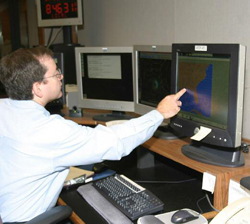 A meteorologist studies a map.
A meteorologist studies a map.
Most of the instruments used by meteorologists are measurement devices. They measure the amount of precipitation that falls and the amount of moisture in the air, called humidity.
Thermometers
We are familiar with thermometers, which measure temperature. Thermometers are very common tools used by meteorologists.
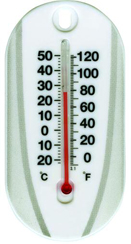 Thermometer
Thermometer
Another instrument for measuring weather conditions is an anemometer. Anemometers are used to measure the speed of wind.
A barometer is an instrument used to measure air pressure, or the weight of air masses. Low pressure can be a sign that bad weather is on its way.
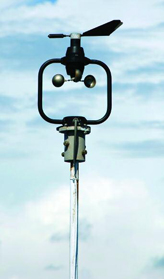 Anemometer
Anemometer
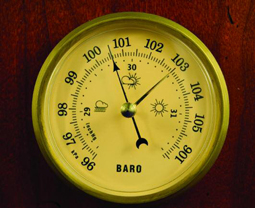 Barometer
Barometer
Make your own barometer
A barometer is used to measure air pressure. You can make your own barometer with a wide-mouth jar, a balloon, a rubber band, a drinking straw and a piece of paper.
Cut the neck off of the balloon, stretch the remainder of the balloon tightly over the top of the jar, and secure it with a rubber band. Tape the straw onto the balloon surface so that about one third of it sticks out beyond the jar. Tape the paper to the wall and place the barometer so that the end of the straw points toward the paper without actually touching it. Mark the straw's height on the paper. Keep checking the straw, and each time you check, mark its height on the paper.
Over time you should see changes in the air pressure. High pressure will push the balloon's surface down, causing the straw to rise. This usually signals clear skies. Low pressure will make the balloon's surface rise, causing the straw to drop, which probably means rain.
Weather Maps
Meteorologists also use maps to track weather conditions. With maps, they are able to show people the location of storms, the temperature of various regions and the position of fronts. Weather maps are useful tools for communicating weather changes that are on the way.
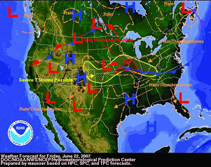 Meteorological maps.
Meteorological maps.
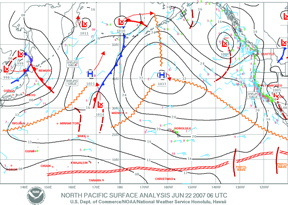
Satellites, radar, and computers are all modern devices used by meteorologists.
Satellites are launched into space and orbit the Earth. They take pictures that show weather conditions from the higher levels of Earth's atmosphere.
Radar uses radio waves to locate objects. Meteorologists can predict how fast a storm is moving and when it will make landfall by bouncing a signal off of rain or snow.
Computers can store and process information about weather conditions to help meteorologists make predictions.
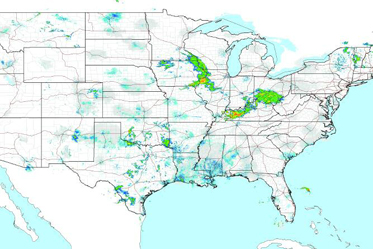 A satellite picture of the United States.
A satellite picture of the United States.
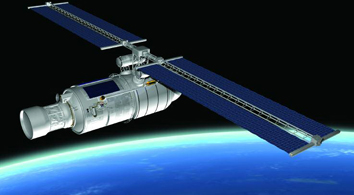 A satellite orbits the Earths.
A satellite orbits the Earths.
Meteorologists often appear on television to communicate current weather conditions and to make predictions about future weather conditions. These predictions help people prepare for changes in weather.
Changing weather affects everyone. Our decisions might be simple, like whether to carry an umbrella or wear a jacket. They may be more serious decisions, like whether or not it is necessary to make preparations for dangerous and destructive weather conditions.
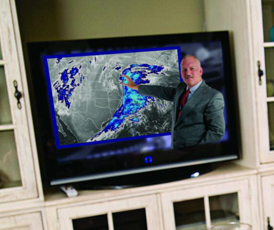
Weather changes constantly, but one thing always remains the same—weather affects everyone on Earth.
Additional topics
- Websites to Visit/Further Reading - Questions to Consider, Websites to Visit, Further Reading
- STORMS - Lightning and Thunder, Calculate the distance of lightning, Fronts, Floods, Tornadoes, Hurricanes, Categories of Hurricanes, Blizzards
- Other Free Encyclopedias